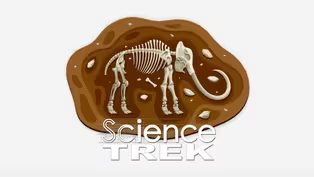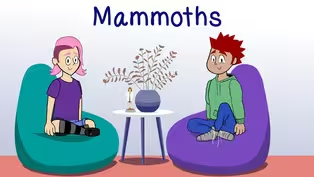
Mammoths: The Nose Knows
Clip: Special | 1m 4sVideo has Closed Captions
Find out more about a Mammoth’s proboscis.
Elephants and their ancient cousins, the mammoths, have very distinctive noses. Find out more about these amazing nostrils and their many uses.
Problems playing video? | Closed Captioning Feedback
Problems playing video? | Closed Captioning Feedback
Science Trek is a local public television program presented by IdahoPTV
Major Funding by the Laura Moore Cunningham Foundation and the Idaho National Laboratory. Additional Funding by the Friends of Idaho Public Television and the Corporation for Public Broadcasting.

Mammoths: The Nose Knows
Clip: Special | 1m 4sVideo has Closed Captions
Elephants and their ancient cousins, the mammoths, have very distinctive noses. Find out more about these amazing nostrils and their many uses.
Problems playing video? | Closed Captioning Feedback
How to Watch Science Trek
Science Trek is available to stream on pbs.org and the free PBS App, available on iPhone, Apple TV, Android TV, Android smartphones, Amazon Fire TV, Amazon Fire Tablet, Roku, Samsung Smart TV, and Vizio.
Buy Now

Science Trek
Science Trek is a place where parents, kids, and educators can watch short, educational videos on a variety of science topics. Every Monday Science Trek releases a new video that introduces children to math, science, technology, engineering, and math (STEM) career potentials in a fun, informative way.(Science Trek music) JOAN CARTAN-HANSEN, HOST: Elephants and their ancient cousins, mammoths, have very distinctive noses.
It's called a proboscis.
It's a long, sensitive, muscular nose that's used for things like gripping food.
It's also used to identify family members.
Elephants can use their nose or their trunk to lift up to seven hundred pounds and to reach for food high in the trees.
And not surprising, elephants also have an incredible sense of smell.
And they can use their nose to call or trumpet to other elephants.
(elephant trumpeting sound) Elephants and mammoths belong to the order Proboscidea.
But not every member of that family had a long nose though.
55 million years ago, trunks had not evolved yet and the moeritherium didn't have much of a nose.
Today, only three proboscidean species survive.
The African bush elephant, the African forest elephant, and the Asian elephant.
So, whether it was a mammoth thousands of years ago or elephants today, the nose is what makes them distinctive.
For more information about mammoths, check out the Science Trek website.
You'll find it at science trek
Clip: Special | 6m 28s | Join Evie and Garrett as they learn about mammoths! (6m 28s)
Providing Support for PBS.org
Learn Moreabout PBS online sponsorship
- Science and Nature

Explore scientific discoveries on television's most acclaimed science documentary series.

- Science and Nature

Capturing the splendor of the natural world, from the African plains to the Antarctic ice.












Support for PBS provided by:
Science Trek is a local public television program presented by IdahoPTV
Major Funding by the Laura Moore Cunningham Foundation and the Idaho National Laboratory. Additional Funding by the Friends of Idaho Public Television and the Corporation for Public Broadcasting.

